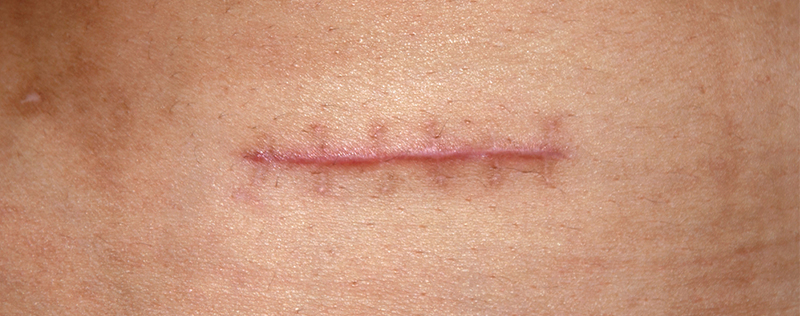Your scar may be large or small in size, but if you’re self-conscious about it, you may feel it’s the only thing people see when they look at you. Over-the-counter skin camouflaging cosmetics may be sufficient to cover up the appearance of modest scars, but if you have stubborn skin irregularities, more aggressive treatments may be needed to solve the problem.
This post will give you the weapons you need to put up a good fight, and win!
Scar Revision Surgery
Scar revision surgery can minimise a scar so that its appearance is more consistent with the surrounding skin’s texture and tone. This is a particularly effective treatment for deep scars.
There have been a variety of advancements in this technique making it even more effective. Surgeons can now perform a complex flap closure that repositions a scar so that it is less conspicuous. They are also able to improve flexibility where a scar has restricted mobility.
8 Additional Treatment Options for Stubborn Scars
Scars can be the evidence of triumph or tragedy, reminders of an exciting sports accomplishment, a childhood boo-boo that never healed correctly, too much sun, or a permanent reminder of a bad bout of acne. Beyond the “why” of a scar, the “how” of its development is completely different from one person to another, reflecting the depth and size of the wound, heredity, ethnicity, circulation levels, and age.
The same factors that contributes to the unique profile of a scar serves as a guide as to which of the following treatments your dermatologist or surgeon may recommend.
Retinoids for Stubborn Scars
Retinoids are used in a variety of products, some available by prescription and some that are available over-the-counter. Retinoids are derivatives of vitamin A, an important player in skin health.
You can find synthetic and naturally occurring retinoids available for oral and topical use. The most common topical skin retinoids to treat topical ageingare tretinoin and tazarotene.They work by binding to specific receptors, which then interact with DNA.
This process generates new molecules, which in turn results in skin improvements.
Chemical Peel for Scar Reduction
Chemical peels are typically used to reverse signs of skin ageing such as fine lines and wrinkles. They can also be extremely effective in treating minor scarring caused by inflammatory acne.
- Superficial peels use a mild acid (often glycolic acid) to peel away the top layer of skin.
- Medium peels employ tricholoroacetic acid for a deeper peel than can be achieved using glycolic acid.
- Deep peels remove several layers of skin using a chemical known as phenol. Deep peels penetrate several layers of skin and cause a second-degree burn of the skin.
Dermal Fillers for Scar Reduction
Hyaluronic acid-based dermal fillers can be used to improve facial contour as well as reduce the depressions in the skin due to scars. When injected, dermal fillers act like an inflated cushion to support facial structures and tissues that may have lost volume and elasticity.
Fillers also hydrate the skin by bringing water to the surface, which helps give a rejuvenated appearance.
Laser Therapy for Stubborn Acne Scars
Acne scars, in particular, can be effectively resurfaced with a high-energy, pulsed or scanned carbon dioxide (CO2) or Erbium-Yttrium-Aluminum-Garnet (Er:YAG) laser. These lasers vaporise scar tissue without damaging the surrounding skin.
As much or as little tissue can be removed as is required by the type of scar being treated.
Subcision for Treating Depressed Scars
Subcision is one of several methods used to break up fibrous bands that cause “rolling scars” (scars with a wave-like appearance). This technique is performed under local anaesthesia by inserting a needle under the skin parallel to the skin surface. The needle is gently advanced or retracted in a piston-like motion, cutting the tethering bands.
The procedure causes bruising which fades within seven days. This approach, where appropriate, achieves significant improvement, usually within two to three sessions.

